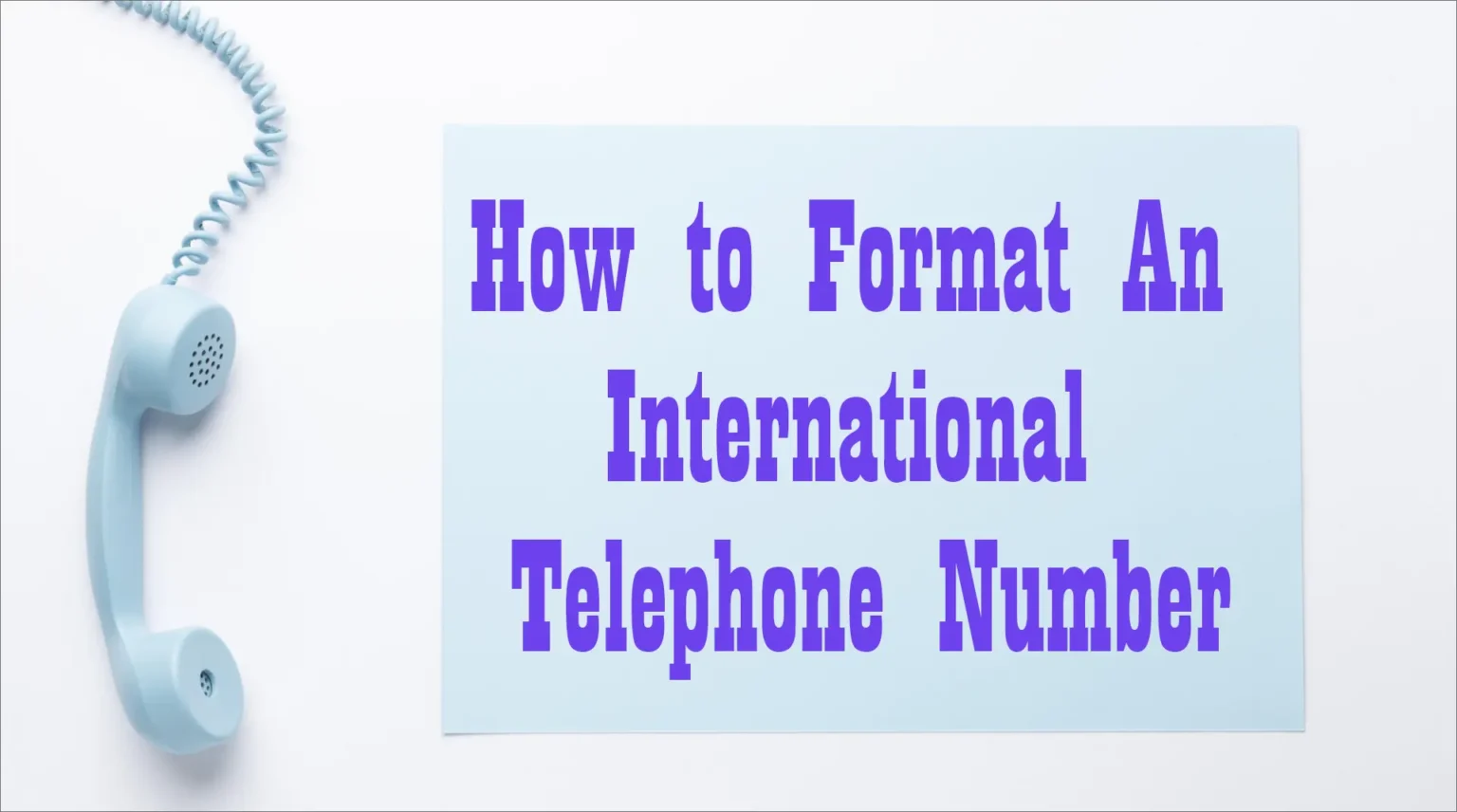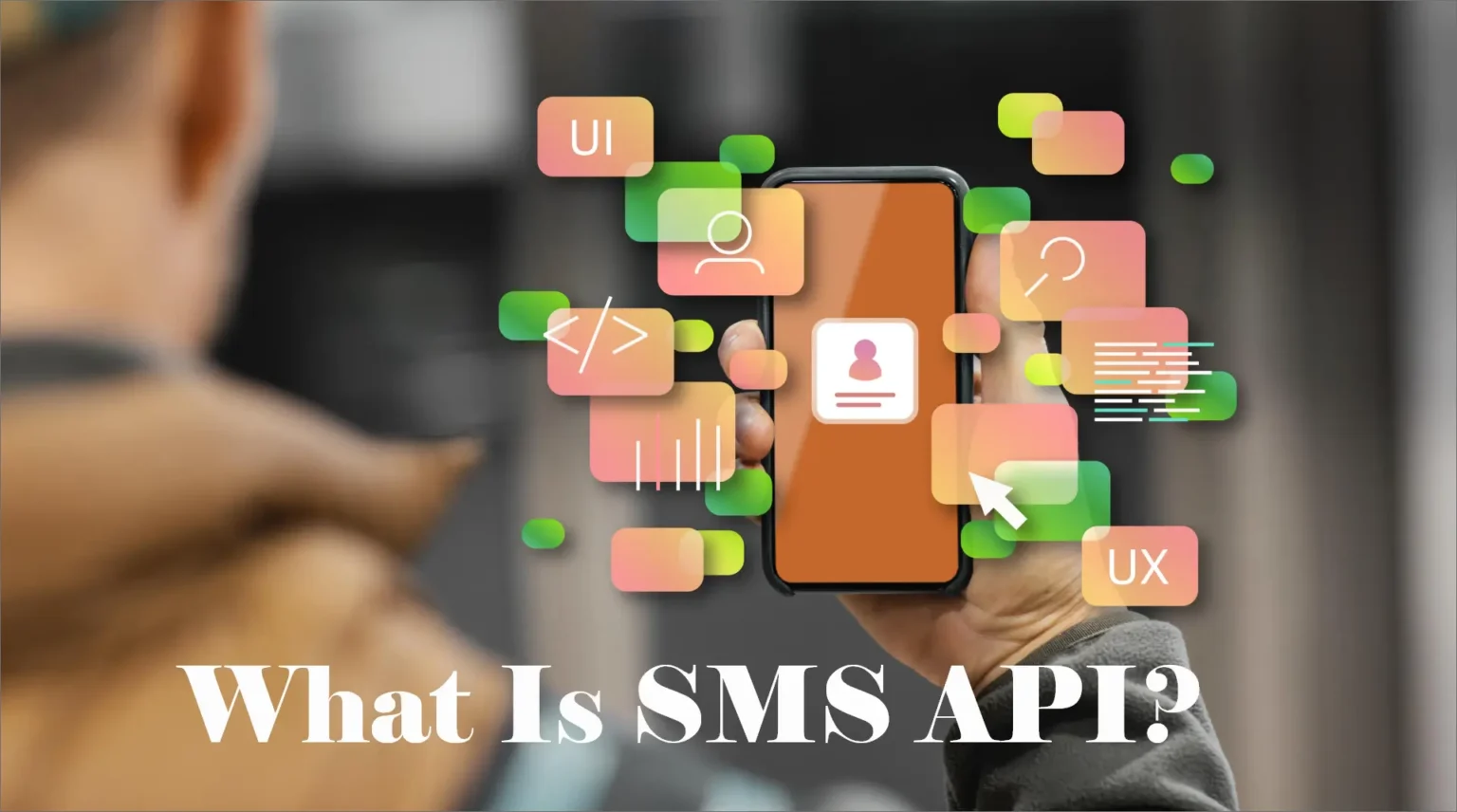
How To Format An International Telephone Number?
We live in an interconnected world where international communication is essential for personal and business purposes. Whether you want to make an international call, send a text message, or display contact information on a website, it is essential to format international telephone numbers correctly. Proper formatting ensures that your message or call goes smoothly and makes it easier for people to understand and dial numbers. You may not know the correct format if you have not made an international call. But do not worry, we will help you. This article will explore the critical elements of formatting international telephone numbers and provide guidelines for doing it directly. Basics Of International Telephone Numbers Before delving into formatting, it is crucial to understand the essential components of an international telephone number. These components vary from country to country but typically include: 1. Country Code Every country has a unique numerical country code. For example, the country code for the United States is “+1,” while the code for the United Kingdom is “+44.” This code tells the international dialing system which country the number belongs to. 2. Area or City Code (Optional) Many countries, like the United States and Canada, have area or city codes that further specify the geographic location of the telephone number. These codes are dialed before the local number and are often enclosed in parentheses, e.g., “(212)” for New York City. 3. Local Number This is the specific number assigned to an individual, business, or location within a country. It varies in length and structure, depending on the country’s numbering plan. 4. Extension (Optional) Sometimes, you may need to include an extension to reach an organization’s specific person or department. Extensions are usually denoted by an “x” or “ext” followed by the extension number. Understanding E.164 Formatting E.164 is an internationally recognized standard for formatting telephone numbers, ensuring consistency and compatibility across worldwide communication systems. Following the E.164 format provides a structured and universally accepted way of presenting international phone numbers. The E.164 format consists of the following components: A + (plus) sign or the International Call Prefix Start with a plus sign (+) or the international call prefix specific to your country to initiate an international call. International Country Calling Code After the plus sign, you should include the international country calling code. Local Area Code Many countries have area or city codes that further specify the geographic location of the telephone number. Local Phone Number The local phone number follows the area or city code (if present) and serves as the specific identifier for an individual, business, or location within the country. Country Local Phone Number E.164 Format UK 020 1234 1234 +442012341234 USA 415 123 1234 +14151231234 Lithuania 8 601 12345 +442012341234 Guidelines For Formatting International Phone Numbers Now that we have covered the essential components of international telephone numbers, let’s explore how to format them correctly: i. Use the Plus Sign (+) for the Country Code To ensure compatibility across different phone systems and networks, always start an international telephone number with the plus sign (+) followed by the country code. The plus sign is a universal symbol that indicates an international call and automatically instructs your phone or device to use the appropriate international dialing prefix. For example: USA: +1 (555) 123-4567 UK: +44 20 7123 4567 ii. Include Area or City Codes (When Necessary) If the country you are dialing to uses area or city codes, include them after the country code. Use parentheses or hyphens to separate the area or city code from the local number. Sometimes, depending on the country’s dialing rules, you may also need to include a trunk prefix (e.g., ‘0’) before the area code. For example: New York City, USA: +1 (212) 555-1234 London, UK: +44 (0)20 7123 4567 iii. Format Local Numbers Appropriately The local number should follow the area or city code (if applicable) and adhere to the formatting conventions of the specific country. Some countries use spaces, hyphens, or periods to separate groups of digits within the local number, while others do not use separators. Researching and following the local formatting rules is essential to ensure accuracy. For example: France: +33 1 23 45 67 89 Japan: +81 3-1234-5678 Russia: +7 495 123-45-67 iv. Include Extensions (When Necessary) If you need to provide an extension to reach a specific person or department, add it at the end of the telephone number. Indicate that it is an extension using “x” or “ext” followed by the extension number. For example: Main Office with Extension: +1 (555) 123-4567 x123 Customer Support with Extension: +44 20 7123 4567 ext 456 V. Be Mindful of Spaces and Punctuation Consistency in formatting is crucial. Use the same spacing, punctuation, and formatting throughout the telephone number. Avoid mixing different styles within the same number, which can lead to confusion. vi. Include International Access Codes for Outbound Calls If you are making an international call from within a particular country, you may need to dial an international access code before the country code. This code can vary depending on location, so consult your local phone service provider for the correct code. How CRMs Handle Phone Number Formatting? CRMs typically employ various methods to handle phone number formatting: Validation Rules Many CRMs include built-in validation rules that enforce specific phone number formats. For example, they may require several digits or specific separators (e.g., hyphens, parentheses). These rules help ensure that phone numbers entered into the CRM follow a consistent and valid format. Auto-Formatting Some CRMs offer auto-formatting features. When a user enters a phone number, the CRM automatically adds separators or adjusts the formatting to match a predefined style. Auto-formatting reduces the burden on users to format phone numbers correctly manually. Country Code Handling For international customers, CRMs often provide fields for country codes and phone numbers. CRMs may also auto-detect the country code based on the customer’s location, simplifying the data entry process. Integration with External Tools CRMs may integrate with external services or libraries that validate and format phone numbers. These tools can verify a legitimate phone number and standardize its format if necessary. User-Friendly Interfaces To ensure data entry accuracy, CRMs often have user-friendly interfaces with tooltips or prompts that guide users on correctly formatting phone numbers. These interfaces may display examples of the expected format. Benefits Of International Phone Number Formatting International phone number formatting, following standardized conventions such as E.164, offers several significant communication and data management benefits. Here are the key advantages of proper international phone number formatting: 1. Global Compatibility International phone number formatting ensures compatibility with communication systems and devices worldwide. When you use recognized formats like E.164, you minimize the risk of encountering dialing issues, ensuring that your calls and messages reach their intended recipients regardless of location. 2. Reduced Errors Correctly formatted international phone numbers reduce the likelihood of errors during data entry and communication. When phone numbers are formatted consistently and following established conventions, there is less room for mistakes like missing digits or incorrect country codes. 3. Enhanced Communication Proper formatting improves the clarity and readability of phone numbers. It makes it easier for individuals to understand and dial numbers correctly, which is especially important when dealing with international clients, customers, or business partners. 4. Data Integrity Maintaining data integrity is crucial in business and customer relationship management systems. Consistent international phone number formatting ensures that data remains standardized and accurate. It simplifies tasks such as data sorting, searching, and analysis, contributing to better decision-making and improved customer service. 5. International Access Proper phone number formatting facilitates international access for businesses dealing with international clients or partners. It allows callers from different countries to quickly identify the country code and dial the number accordingly, removing potential barriers to communication. 6. Compliance And Regulations In some countries, there may be regulations or requirements regarding phone number formatting. Adhering to international standards ensures your business complies with regional or national regulations, avoiding potential legal issues. 7. Improved Customer Service Accurate and consistently formatted phone numbers enable customer service representatives to contact clients without hindrance. It leads to faster response times and better customer satisfaction. 7. Error Reduction In Automation In automated systems like SMS or email campaigns, correctly formatted international phone numbers reduce the risk of delivery failures or messages being marked as spam. Automated systems can rely on recognized formats to ensure message deliverability. Does Poorly Formatted Phone Number Impact Your Team Productivity? Poorly formatted phone numbers can significantly impact team productivity, particularly in organizations that rely heavily on communication and data management. Here are some ways in which poorly formatted phone numbers can impact productivity: Employees will likely make data entry errors when phone numbers are not formatted correctly. When team members manually dial phone numbers, poorly formatted numbers can lead to dialing errors. When team members struggle to decipher poorly formatted phone numbers, it can delay communication. Poorly formatted phone numbers can lead to frustrated customers who receive missed calls, wrong numbers, or delayed responses. Searching for contact information in CRM and contact management systems becomes challenging when phone numbers are inconsistently formatted. Organizations should implement measures to mitigate these productivity challenges to ensure that phone numbers are consistently and correctly formatted. Conclusion – Cold Calling In our interconnected world, proper international phone number formatting is essential for seamless communication and effective data management. By following recognized conventions like E.164, businesses can ensure global compatibility, reduce errors, enhance communication, maintain data integrity, and comply with regulations. Conversely, poorly formatted phone numbers can disrupt team productivity, leading to data entry errors, communication delays, and frustrated customers. Organizations should prioritize the correct formatting of international phone numbers to optimize team productivity. It entails educating team members, implementing validation rules, and using CRM systems that facilitate accurate data entry. Businesses can streamline their communication processes, reduce errors, and provide better customer service, ultimately contributing to their success in the global marketplace. What is the country code in an international phone number? The country code is a numerical code unique to each country, indicating which country a phone number belongs to. For example, the country code for the United States is +1. Do all countries have area or city codes in their phone numbers? No, not all countries have area or city codes. Some countries rely solely on the local phone number without an additional area or city code. What happens if I do not format an international phone number correctly? Incorrectly formatted phone numbers can lead to dialing errors, communication delays, and missed opportunities. It can also impact data integrity and customer satisfaction in a business context. Are there tools or resources to help with international phone number formatting? Some online tools and databases provide country-specific information and formatting guidelines for international phone numbers. CRM systems often have built-in validation and auto-formatting features to assist with this. Are there any legal or regulatory implications for formatting international phone numbers incorrectly? In some countries, there may be regulations related to phone number formatting, especially for businesses. Complying with these regulations is essential to avoid legal issues or fines. How often should I review and update phone number formatting in my CRM or contact database? Regularly reviewing and updating phone number formatting is a good practice, especially when dealing with international contacts. Consider conducting data quality checks and cleanups periodically to maintain accuracy. What if I need to make an international call from a different country? To make an international call from a foreign country, you’ll typically need to use the international access code or dial-out code specific to your country, followed by the country code and the local number. Can I customize the formatting of international phone numbers for my business or website? You can customize the formatting to align with your business’s style or regional preferences. However, ensuring that the custom format remains clear and adheres to recognized conventions is essential. Read More: Are VoIP Phone Systems Reliable? Read More: Are VoIP Calls Free? Exploring the True Cost of VoIP Calls









